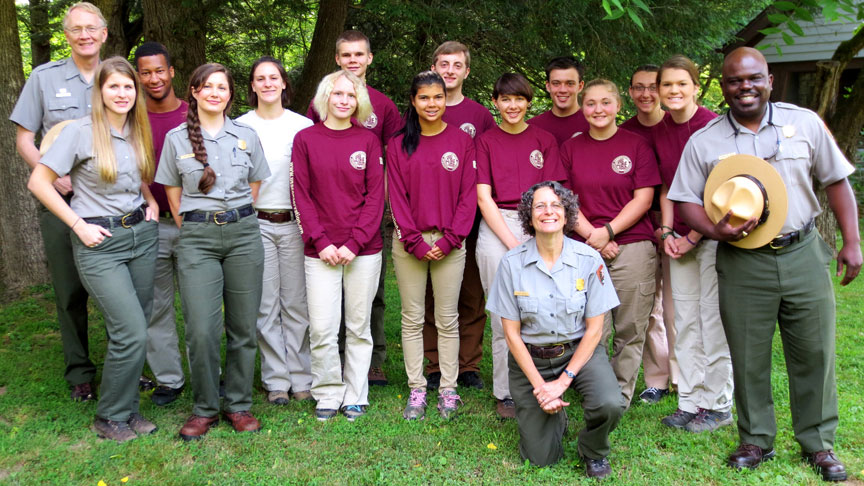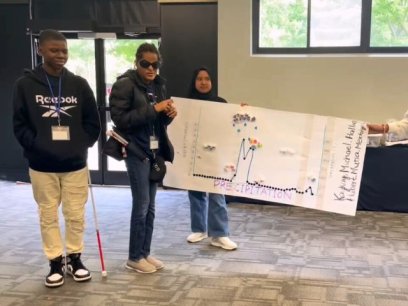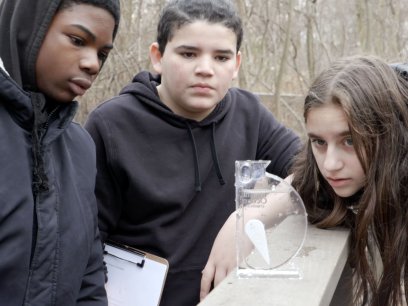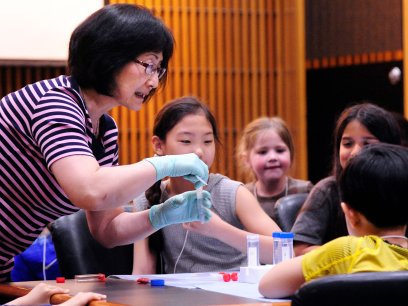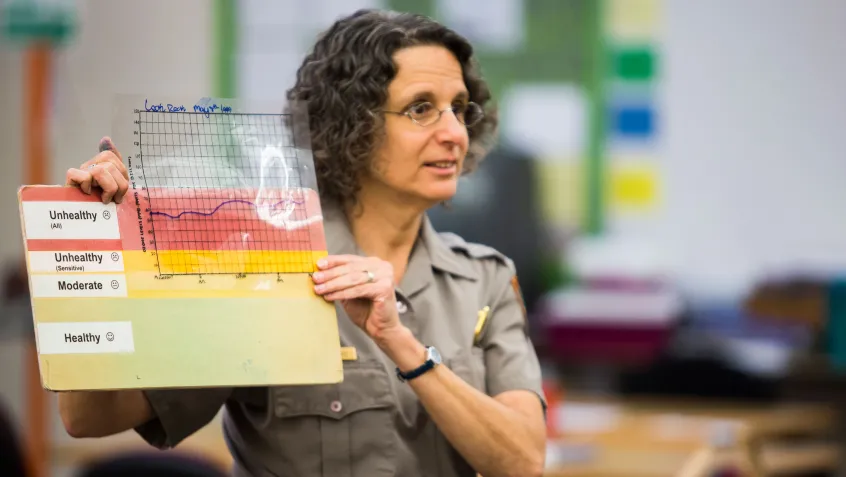
Susan Sachs has been a science educator for over 20 years and even has a species of lichen named after her - an honor rarely bestowed on educators. However, pursuing this career path was not what a young Sachs imagined. “I didn’t enjoy science in school,” she said. “It didn’t excite me.”
Growing up in Baltimore, Sachs stayed close to the city except for occasional family trips to the Chesapeake Bay. But when she met friends in college that enjoyed hiking, their trips into the wild sparked her interest. “I got really excited by the spring wildflowers,” she said. “Then I started looking into all the things that live around them.”
Getting Outdoors and Gathering Information
Since then, getting kids out in nature is something Sachs is passionate about. As the Education Branch Chief for the Great Smoky Mountains National Park, Sachs has built a long-term citizen science program that involves students, teachers and high school interns collecting data for scientific research related to phenology, species distribution and abundance, impacts of ozone on native plants, and numerous other topics. Some of the studies have 13 to 14 years of data collected.
“Citizen science not only gets students outdoors and involved, it contributes to collecting real data that helps park managers do a better job of managing our resources,” she said.
Though there are many tools available for educators to participate in citizen science, Sachs remembers starting the project in 2002. “When we first started doing this, we had to create the wheel,” she said. Sachs said she and the science coordinator examined the critical issues the park was facing, such as air pollution, exotic species, and climate change, and considered the ways they could connect the research that was going on in the park with the educational community, particularly middle and high school students.
“We reached out to local teachers and outside researchers so we knew what we were doing was appropriate for the age group and aligned with science standards,” she said.
Student Questions Open New Research Paths
Citizen science not only helps the park, since funding for long-term projects can be hard to come by, but it also helps students learn about the importance of careful observation and asking questions, key practices in the scientific method. The students take the work seriously since they are aware that it contributes to important scientific research, and may even open new avenues of inquiry.
Sachs recalls a seventh grader who was helping with an ozone biomonitoring project examining the impacts of air pollution on plants, some of which had visible damage. He was curious about how the damaged plant might impact the nutritional value and thus affect an animal that eats it. Since she didn’t know, Sachs asked a researcher at the Appalachian state, who subsequently posed the question to a friend at the USDA. This launched a study into the nutrients of these plants in the food chain.
Sachs aspires to empower students with a sense of wonder through citizen science, no matter the career path they choose: “My hope is that the experiences of understanding the scientific method and being scientifically literate will help students no matter what field they go into.”
